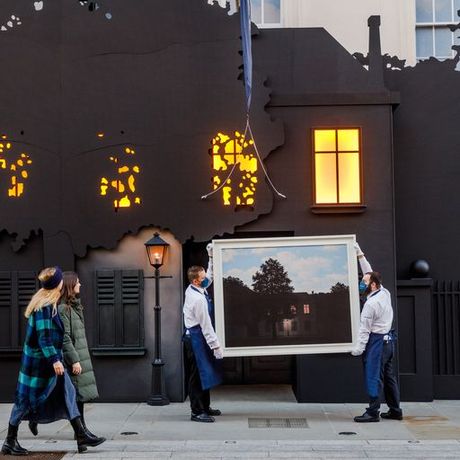
In a clear sign of how the high-end art market is changing, Sotheby’s has released a new report on works of art that have sold for more than $1 million over the past five years.
Titled Peak Performance, the report covers data from Sotheby’s, Christie’s and Phillips auctions between 2018 and 2022 of Impressionist, Modern and Contemporary art, as well as Old Masters. The data is supplemented with information from Sotheby’s private sales department. This is the first in a series of “informational reports” produced for the auction house with analytics firm ArtTactic; similar surveys in other sectors should follow.
Sales of works of art over $1 million are very important and are an indicator for the whole market: they represented an astonishing 74% of total sales by value for the period studied, whereas they represented only 4% of the volume.
So what does the report find? First, that the market for works priced above $1 million is resilient: data shows that sales rebounded strongly from a slump in 2020, increasing 9.5% between 2018 and 2022. Unsurprisingly, the dominant category is impressionist and modern art, perhaps more unexpectedly was the strength of contemporary art in private sales – almost 60% of sales in this category were made privately, according to Sotheby’s own data (Christie’s and Phillips were not included here). Generally, private sales represent between $1 billion and $1.5 billion each year.
Nonetheless, the strongest market was in the very high end, works of art that sold for over $20 million. These accounted for more than 45% of sales in 2022, and the report highlights the fact, to put it simply, that “the rich are getting richer”.
Two trends are very significant: demographic and geographic. In the art trade, the rise of Asian collectors was the big story just before the pandemic hit, and almost a third (32%) of bidders in the $1 million+ category came from Asia during the reporting period. And buyers around the world are getting younger: the number of Gen X (born between 1965 and 1980) and Millennial (born between 1981 and 1996) bidders in this category is growing, while the number of baby boomers ( born between 1946 and 1963) has decreased. slightly.
At a panel discussion organized by Sotheby’s to launch the report to its clients and which I moderated, Brooke Lampley, head of sales for fine art at the firm, spoke about the evolution of the high-end market. According to Lampley, the real change over the past 20 years “has moved from themed collections to broader shopping across all categories.” This means, she says, that customers will only buy a truly exceptional work, for example that of Magritte The Empire of Lights (1961), which sold for $79.4 million in 2022, but does not raise prices for every Magritte. “Clients are looking for the best jobs, but only the best jobs, in all categories,” she said.
Sotheby’s provided its own private sales data for the report. David Schrader, the head of that department in the company, noted that a much higher proportion of sales over $1 million were made by his department, although the picture was shaky. Overall, nearly 86% of those sales were for works in the $1 million+ bracket, but the numbers fluctuated from year to year, having peaked in 2020. Looking ahead, he believed that the “sweet spot” of sales would be in the $1 million to $5 million category this year.
